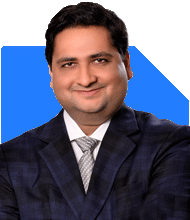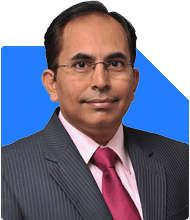Milind Vadjikar | Answer |Ask -Follow
Insurance, Stocks, MF, PF Expert - Answered on Nov 26, 2024
He has a mechanical engineering degree from Government Engineering College, Sambhajinagar, and an MBA in international business from the Symbiosis Institute of Business Management, Pune.
With over 16 years of experience in stock investments, and over six year experience in investment guidance and support, he believes that balanced asset allocation and goal-focused disciplined investing is the key to achieving investor goals.... more

Hi Experts, I seek your guidance on my mutual fund portfolio. Below are the details: Total Portfolio Details: - Total Invested Amount: ?15,76,159 - Current Value: ?19,35,234 - Total Returns: ?3,59,075 (+22.78%) - XIRR: 20.75% Monthly SIP Contribution: ?1,18,000 Breakdown of monthly SIP contributions across funds: 1. Parag Parikh Flexi Cap Fund Direct Growth – ?30,000 2. SBI Large & Midcap Fund Direct Plan Growth – ?15,000 3. SBI Magnum Mid Cap Fund Direct Plan Growth – ?20,000 4. Nippon India Large Cap Fund Direct Growth – ?30,000 5. Nippon India Small Cap Fund Direct Growth – ?7,500 6. ICICI Prudential Technology Direct Plan Growth – ?10,000 7. Quant Small Cap Fund Direct Plan Growth – ?7,500 8. HSBC Small Cap Fund Direct Growth – ?5,000 9. Edelweiss US Technology Equity Fund of Funds Direct Growth – ?5,000 Can you suggest if I am on track to create 5 CR corpus in 10 years I have ?25 lakh invested in a Fixed Deposit (FD) in my mother’s account, earning an interest rate of 7.75%, to generate tax-free returns. Additionally, I’m planning to purchase a plot worth ?30–50 lakh in the next 1–2 years. Is it a good idea to keep the money in FD for now, or are there better short-term investment options I should consider to maximize returns while keeping the funds accessible for my future purchase? Looking forward to your suggestions! Thank you!
Your monthly sip value adds upto 1.3 L however you have claimed it to be 1.18 L. (Maybe a typo).
Existing corpus(19.35 L) and monthly sip (1.3 L) won't reach 5 Cr in 10 years.
You have two options to make it happen:
1. Increase monthly sip amount to 1.9 L.
2. Top-up current monthly SIP of 1.3 L by minimum 10% each year for 10 years.
Both ways will lead you to a corpus of 5 Cr over 10 years.
You may consider money market mutual funds for parking your funds for a 1 year horizon. Returns may be comparable to FD returns but with flexibility to withdraw anytime. They typically have low to moderate risk.
Happy Investing;
X: @mars_invest
You may like to see similar questions and answers below
Nikunj Saraf | Answer |Ask -Follow
Mutual Funds Expert - Answered on Apr 19, 2023
Ramalingam Kalirajan |9736 Answers |Ask -Follow
Mutual Funds, Financial Planning Expert - Answered on May 30, 2024
Hardik Parikh | Answer |Ask -Follow
Tax, Mutual Fund Expert - Answered on May 03, 2023
Ramalingam Kalirajan |9736 Answers |Ask -Follow
Mutual Funds, Financial Planning Expert - Answered on May 30, 2024
Ramalingam Kalirajan |9736 Answers |Ask -Follow
Mutual Funds, Financial Planning Expert - Answered on Nov 26, 2024
Nayagam P P |8830 Answers |Ask -Follow
Career Counsellor - Answered on Jul 15, 2025
Nayagam P P |8830 Answers |Ask -Follow
Career Counsellor - Answered on Jul 15, 2025
Nayagam P P |8830 Answers |Ask -Follow
Career Counsellor - Answered on Jul 15, 2025
Patrick Dsouza |1295 Answers |Ask -Follow
CAT, XAT, CMAT, CET Expert - Answered on Jul 15, 2025
Janak Patel |58 Answers |Ask -Follow
MF, PF Expert - Answered on Jul 15, 2025
Nayagam P P |8830 Answers |Ask -Follow
Career Counsellor - Answered on Jul 15, 2025
Nayagam P P |8830 Answers |Ask -Follow
Career Counsellor - Answered on Jul 15, 2025
Nayagam P P |8830 Answers |Ask -Follow
Career Counsellor - Answered on Jul 15, 2025
Samraat Jadhav |2385 Answers |Ask -Follow
Stock Market Expert - Answered on Jul 15, 2025
Mihir Tanna |1067 Answers |Ask -Follow
Tax Expert - Answered on Jul 15, 2025



























